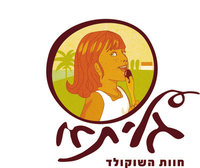It's four o'clock in the morning and I can't sleep. Tomorrow, I am leaving on a trip for several weeks to help care for my mother in-law, who is recovering from a nasty car accident. For this trip, I made the decision to fly, which made sense at the time. But now, with just one day left to get through a giant to-do list, I am having second thoughts. I wish I was driving - instead of flying.
I have always had an issue with packing for a trip. I know so many people that are "seasoned travelers" and they have this whole packing thing down to a science. They whip out a slim suitcase, throw in all the essentials, and they are on their way. I'm the opposite. When I go somewhere, I am hit with major anxiety attacks as I try to figure out how to bring all my worldly possessions along. I suppose that is why I prefer traveling by car, as I see my SUV as one giant steamer trunk!
So in my research for traveling to Israel, one of the things I've been reading about is the necessity of "packing light". On one website, the Travel guru makes the following suggestion: "Limit yourself to 20 pounds in a carry-on–size bag - no bigger than 19" x 22" x 14"." Oh my goodness, I need a bag that size - just to carry my shoes!
He explains that having too much luggage marks you as a typical tourist. When you limit yourself to only one bag, you're mobile and in
control. You will less likely be the target of theives and con artists. Plus you will be better prepared for cobble-stone streets, stairs, and long walks to your hotel.
The expert explains that in addition to packing light, you also need to pack smart. Which means that you need to bring very little. For instance, you should aim to pack clothes that coordinate and can be worn multiple times. Don't bring any items that will only be used once. And, instead of packing for the worst-case scenario... pack for the best-case scenario. If you find you need something not packed, buy it when you get there!
So, as I read through all of this, I wondered if I should use my upcoming trip as a "test". Perhaps I should try and limit myself to just one suitcase for this trip. After all, I'm staying with family, so I have laundry facilities. I am traveling within the USA, which means I won't be far from a Walmart to stock up on any items I need. And, since the purpose of my trip is not social, I really don't have to worry about impressing anyone with a savvy wardrobe.
However, as my travel anxiety is starting to grow, I feel like all bets are off. The small carry-on bag in my room is starting to look absolutely ridiculous. Instead, the enormous rolling cargo bag is looking much more appealing. While I know in my heart that traveling light, makes so much more sense, I just don't know if I am cut out for the lean travel lifestyle. I'm too neurotic.
Of course, this is all starting to put a damper on my plans to travel to Israel. If I can't figure out how to pack light for just a few weeks in America, how on earth will I ever be able to pack light for one hundred days in Israel?
Hmm. Maybe I am being too hard on myself? Maybe the different natures of these trips has some bearing. For my upcoming trip, I need to be able to work from home. So, bringing along my laptop is an absolute necessity. In addition, since I will be staying in one location, perhaps a large suitcase isn't really such a hindrance?
To keep my sanity, I think that I just need to make a pile of what I want to pack. Then, I will let the size of the pile dictate what suitcase I end up using. If it ends up being too much for a small bag, maybe I just need to be okay with a big bag this time.
All is not lost. I can still use the travel expert's guidelines as a goal to work towards. On this trip, I can be aware and take notes of what I really needed/used. This is not going to be the last trip I take before I finally head off to Israel. Therefore, I am going to give myself a break and use each and every travel experience as an opportunity to "pack lighter" and travel smarter. It might take me awhile before I can totally wean myself off the need to "take everything" with me. However, I can accept that each step I take will help me reach the ultimate goal of packing light.
 Sometimes I feel like I am writing an "art blog" about Israel, as so many of my posts seem to focus on the artists and artisans of Israel. However, it seems that the country has a special place in it's heart for the arts.
Sometimes I feel like I am writing an "art blog" about Israel, as so many of my posts seem to focus on the artists and artisans of Israel. However, it seems that the country has a special place in it's heart for the arts.



































